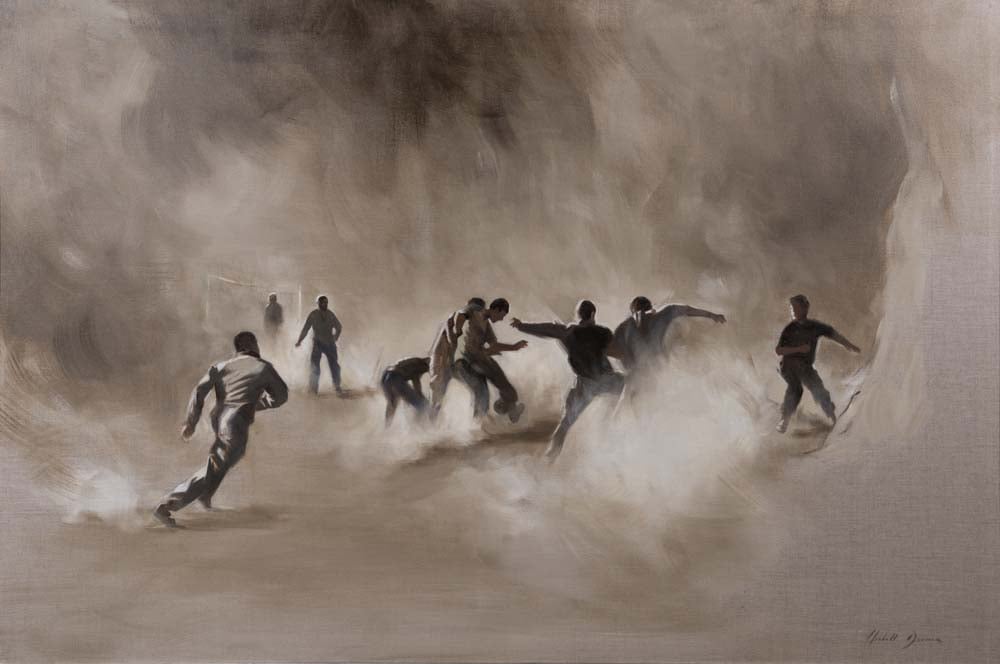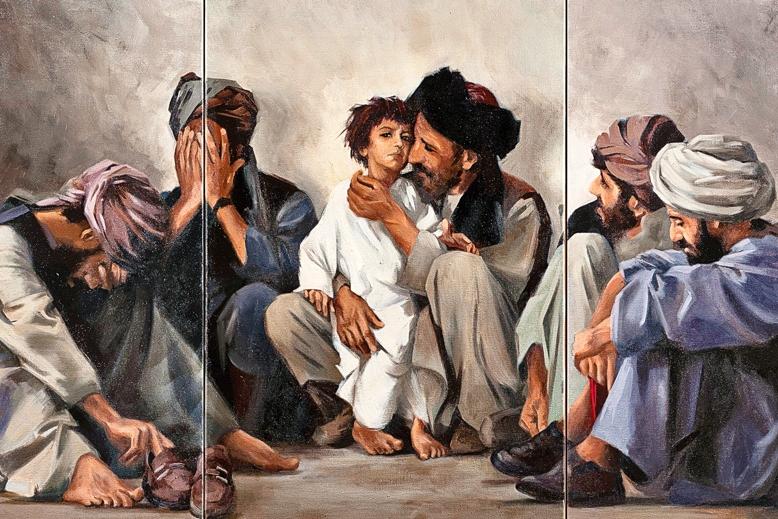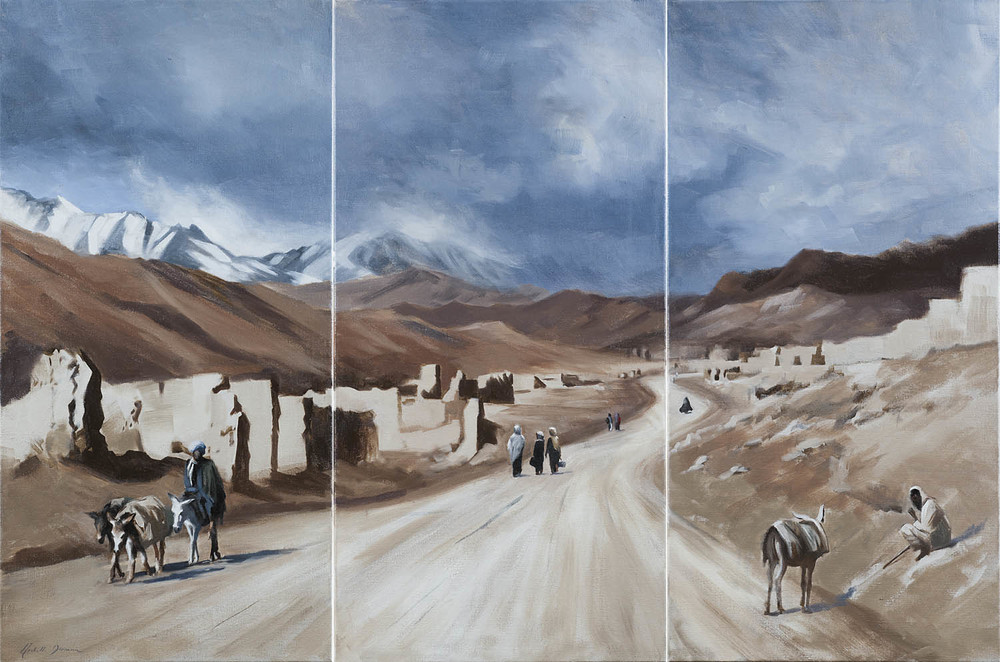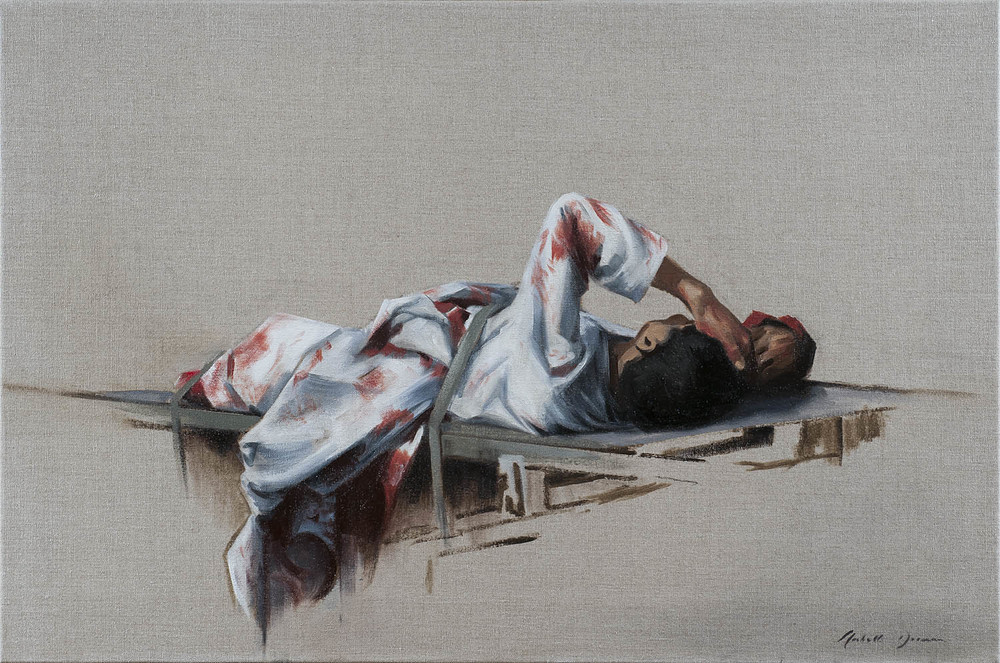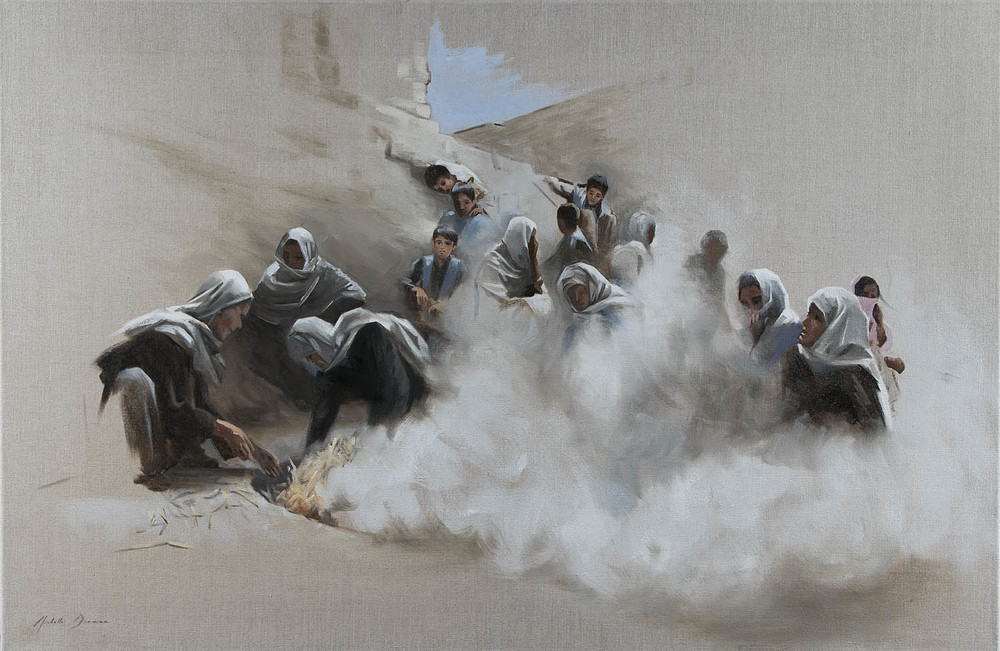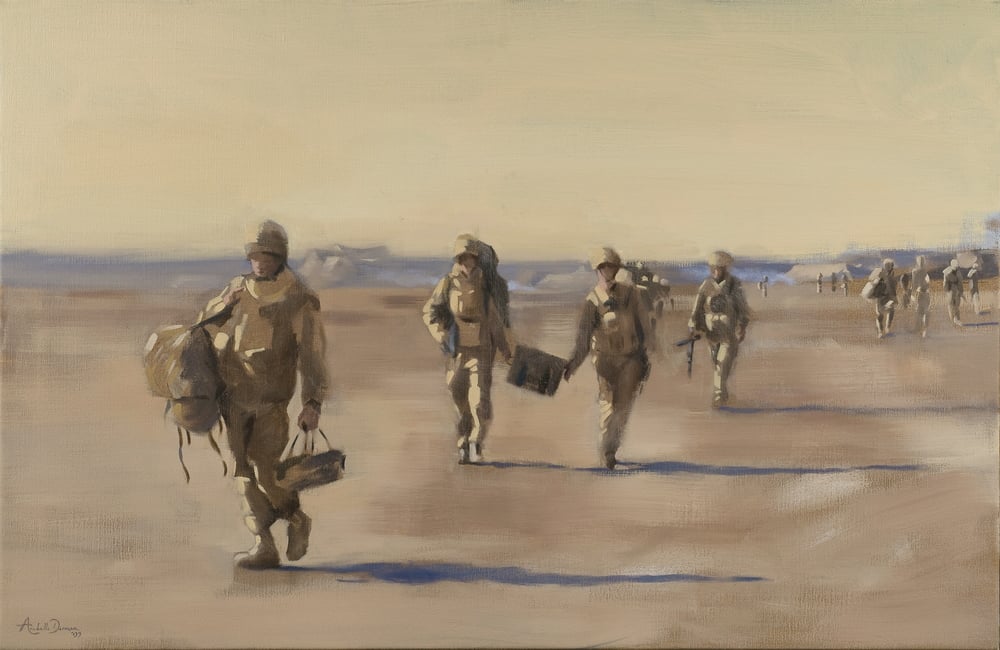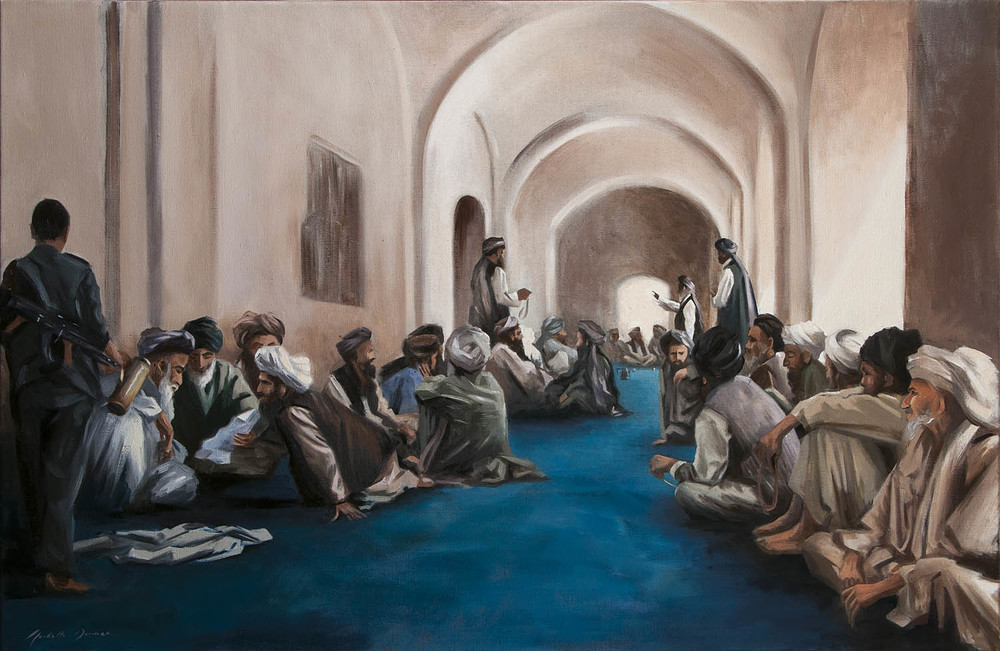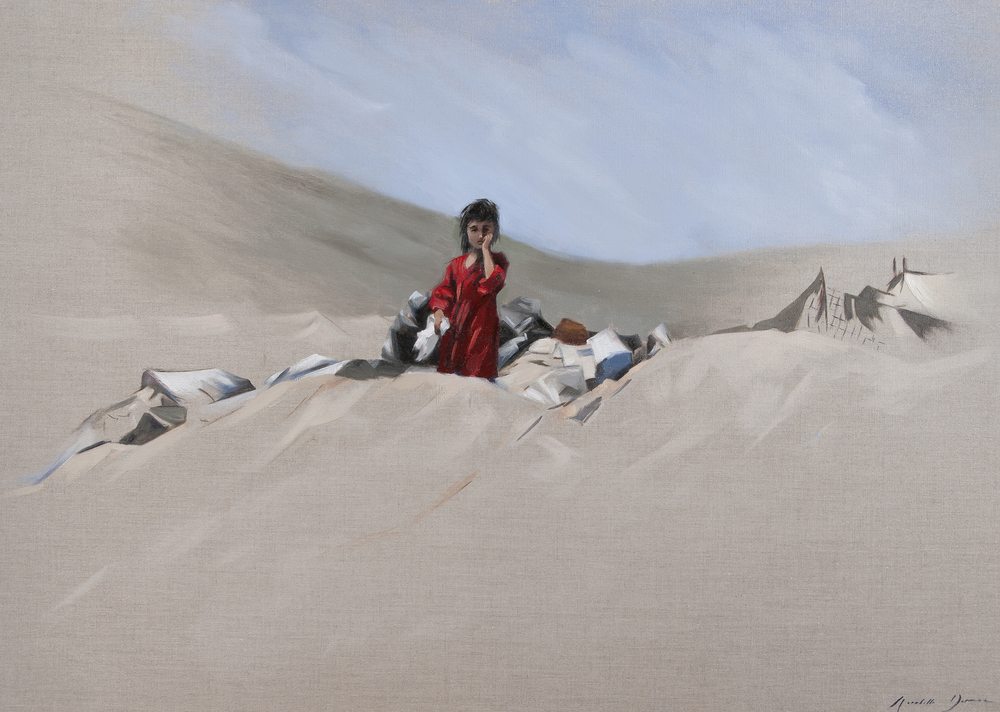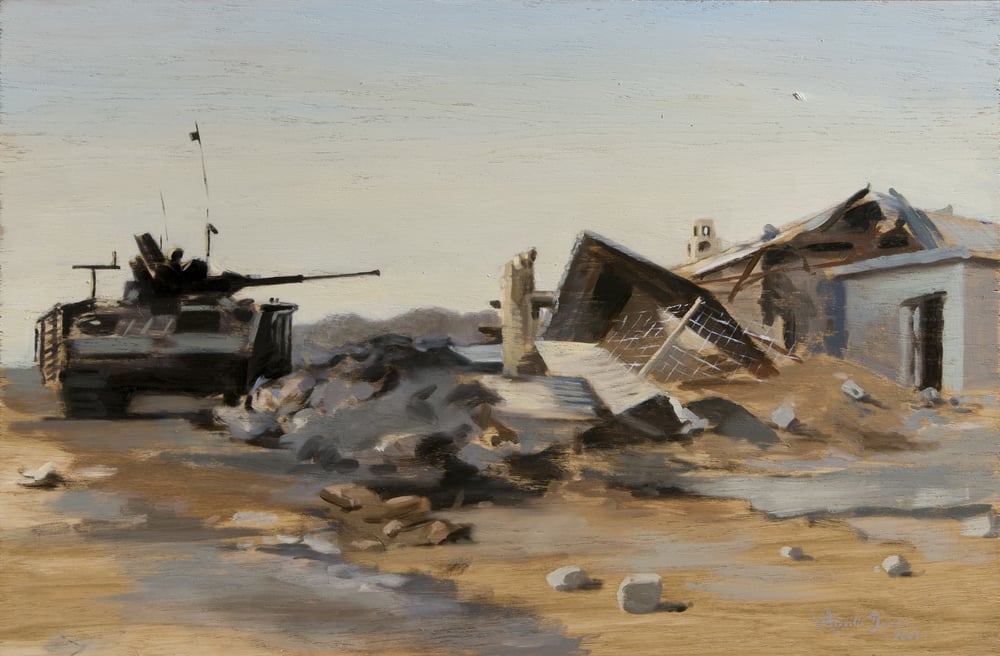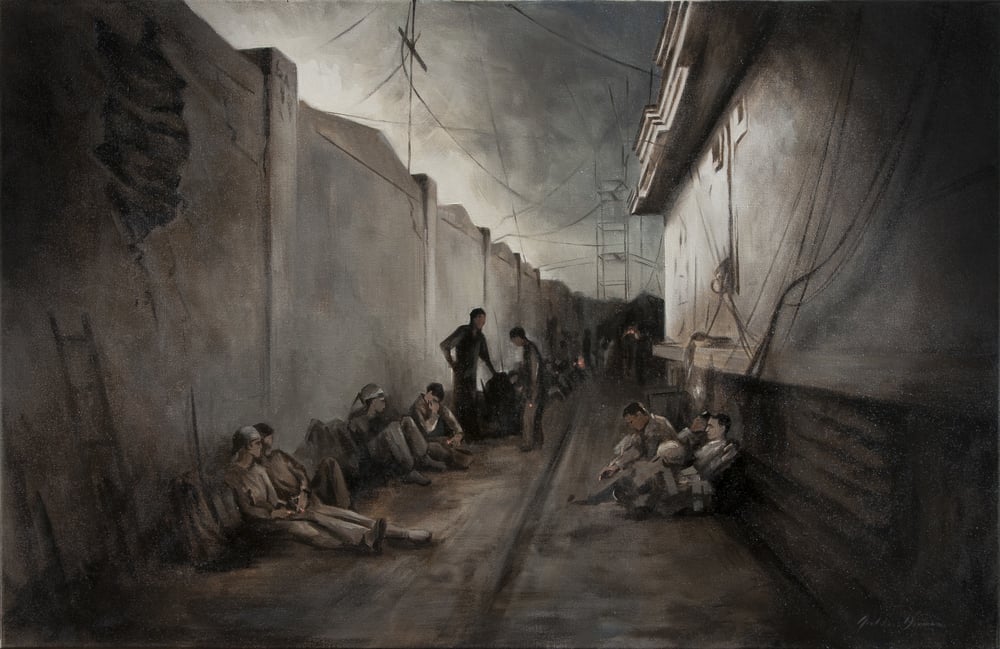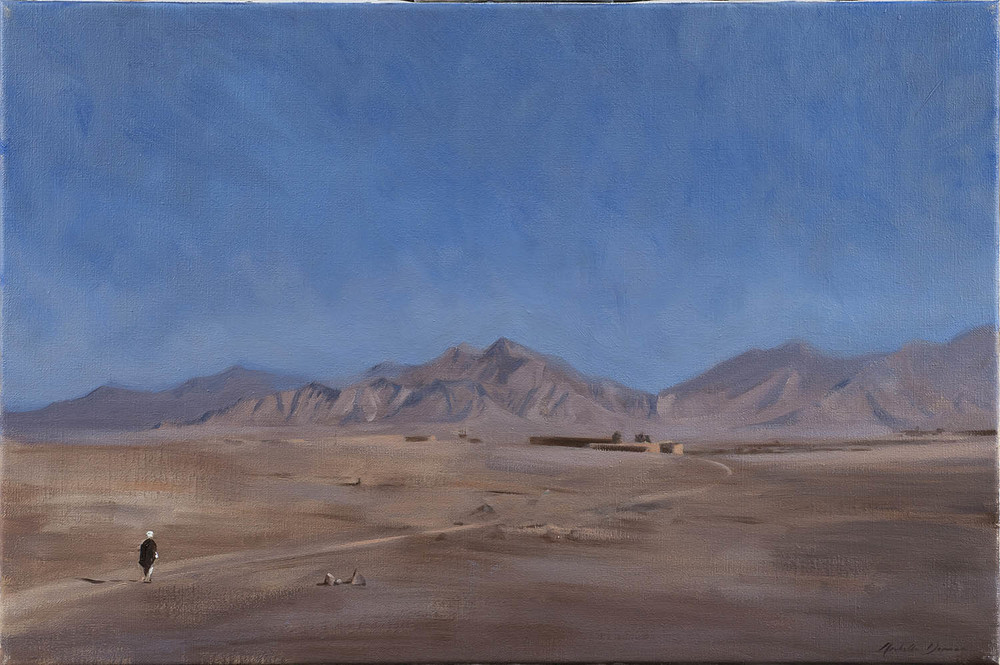“I’m not interested really in tanks and the guns and the horrible violence. I’m interested in the pathos. And often, as weird as it sounds, the beauty that can be found in the tragedy of war. There is a lot of human beauty and breathtaking moments of courage and comradeship and humour.”
When war artist Arabella Dorman arrived on the Greek island of Lesbos last year, she was confronted with the sight of thousands of refugees desperately trying to make it to shore.
“What I saw there was wholly overwhelming. In all my work abroad in war-zones, I’ve never seen anything so emotionally agonizing. It was deeply upsetting.”
Arabella, who has travelled with the British army across Iraq and Afghanistan, was haunted by the memory of what she saw in Lesbos. She decided to create her first ever installation using a lifeboat used by 62 refugees in their perilous journey to Europe. Now, the boat hangs suspended from the ceiling of St. James’ Church in London, United Kingdom, an effort, she says, to help the British public “empathise and understand”.
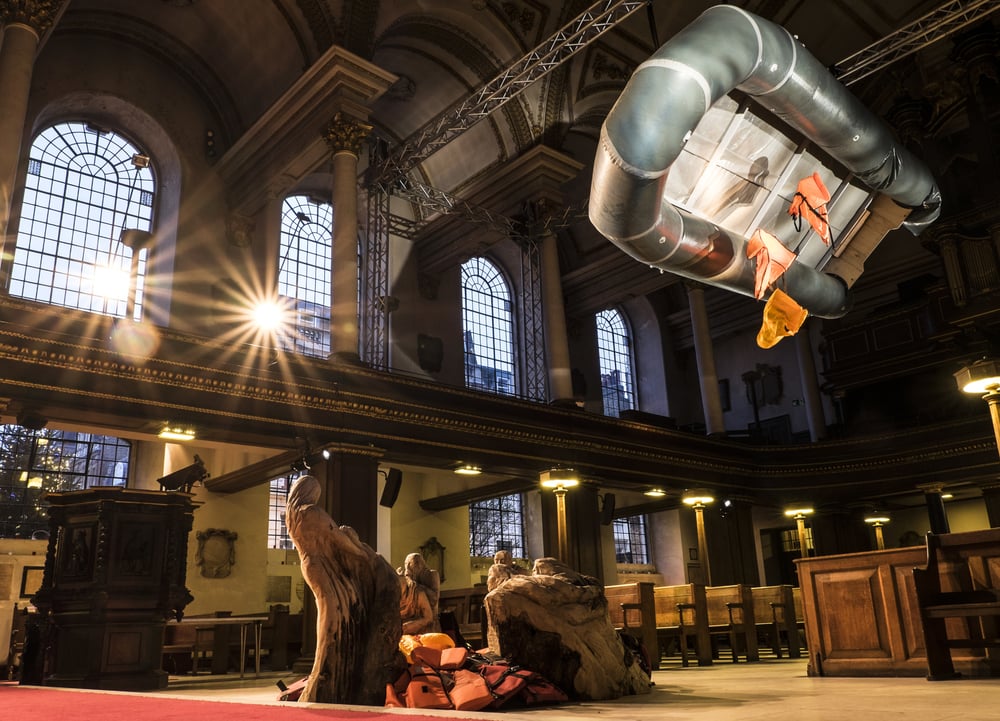
Arabella Dorman says: “The thought of a boat suspended in flight, in air, and being lit from below operates on so many different levels spiritually”
“There was one little boy who I pulled off a boat. He must have been about five years old. He was shaking, probably hypothermic. He was absolutely terrified. He was howling.
“Once I got him vaguely dry and warm, and reunited with his extremely distressed father – who was also howling and sobbing – this little boy dug into his rucksack and pulled out this red fluffy toy heart saying ‘I love you’. He handed it to me, and I looked at his father.
“His father said: ‘He’s been carrying this from Syria. This was in our home in Syria. He wanted to give this to the first person in Europe who showed him kindness. Please take it as our gift.’
“I had to just walk away. It was like something broke inside me. That’s – how do you respond to that? I thought, what is he thanking me for? I haven’t done anything. I felt so impotent, and so ashamed. It’s extraordinary. We have so much to learn from people like that.”
From her paintings of war in Iraq and Afghanistan, to her recent installation, Arabella’s work is about finding “the human face of war” and moments of beauty in the darkest of places.
Arabella spoke to the IPF about why she feels compelled to make her art, and offers her best advice for those looking to follow in her footsteps.
When was the first time you visited a conflict zone?
I was in Kashmir when I was 18. I saw the devastating effects of that conflict, around 1993.
At that point, was it an instinct for you to pick up a paintbrush?
Very much so, but I was a bit overwhelmed by how to address the huge subject of conflict, and I wasn’t a confident enough painter at that age either. But my first official engagement was when I went to Iraq in 2006. I was travelling with different British military units, and I travelled quite widely around Southern Iraq. I was in Basra Palace which was under fairly heavy sustained mortar fire while I was there. That was a real eye-opener.
I’m not interested really in tanks and the guns and the horrible violence. I’m interested in the pathos. And often, actually, as weird as it sounds, the beauty that can be found in the tragedy of conflict. There is a lot of human beauty and breathtaking moments of courage and comradeship and humour.
You’re generally described by the media as a “war artist”. What does being a “war artist” mean to you?
I actually find that term very misleading to be honest. I think of myself, if anything, more as an “anti-war artist”. But my area, my subject is war. It’s conflict and the consequences of conflict. The immediate impacts and long-term repercussions.
I stand in a very long tradition of war artists. It’s interesting because the role of the war artist, to my mind, has changed quite a lot.
In the first and second World Wars, the war artist was often commissioned for propaganda. But what they witnessed was so horrific. They took it into their own hands and they created these devastatingly powerful images. Since then, I think war art has been a cry against war.
What I’m really interested in focusing on isn’t actually the machinery of war, as much as the human face of war – the unseen hidden aspects that are behind the headlines.
Your latest collection of paintings, called ‘Before The Dawn’, are all scenes from Afghanistan. They’re scenes of war, but there’s a kind of serenity in the way you paint the sky and vast landscapes – why?
That is because so much of conflict is sitting around in quieter moments. It’s not by any means all kinetic, furious action. I think those are moments quite often when you capture the truth of the psyche.
We see so much war in the media, and it’s very easy to become somewhat emotionally inured to it. We slightly blunted because of the familiarity.
With a painting, or to a certain extent an installation piece of art, it has the ability to slow the narrative down. It asks for a deeper engagement from the viewer than perhaps a photograph on the front pages of a newspaper.
What materials do you use to make art in war?
In the field I work in watercolours and charcoals, because you have to travel very light and you’ve got to be very quick. The charcoals are brilliant because I do all my portraits in charcoal.
One of my films, called ‘Before The Dawn’, which I did for my Afghan exhibition, is of me doing a quick ten minute portrait of this Afghan chief. It’s lovely because you see how thrilled they are, and there’s about 50 guys sitting round watching me.
It’s a lovely example of the way a portrait can break the ice because it’s a universal and fully comprehended language.
Watercolours – I do if I have time, but often there just isn’t because you’ve got to wait for paint to dry. Also lots of pencil sketches, and note-taking. I write a diary, which is a really important part of my method.
How so?
When I go back to the studio, those diaries and sketchbooks are really how I build up a body of work. I take photos as well, but I try to use them purely as reference rather than the main backbone.
With my last body of Afghan work, it took five years to pull it together because I went back to the country several times. The better paintings are always the ones that are more measured and thought over.
Do you have any new projects for 2016 in mind?
I’ve been very interested in the subject of refugees for about three years now, and because of my work in Afghanistan and Iraq. I’ve got so many notes on what a refugee means from an artist’s point of view- it’s a very interesting concept because you’ve got despair driving one end but you’ve got hope as the incentive.
I’m now planning my next big installation, which is called ‘The Wave’. I’m hoping to build a 50 foot wave from salvaged life jackets, which I’m praying are now being collected in Lesbos, but we’re having huge bureaucratic problems getting them out of the island.
And finally, as an experienced and well-respected war artist, do you have any words of advice for people looking to go to war zones to create art or photography?
My one piece of advice would be to look for the hidden stories. Just be still and listen, because that’s when the truth reveals itself.
Don’t try and chase the big stories. It’s the small stories and the individual lives that tell the real human drama. For me it’s about what makes us human today, and how we respond to each other. There’s a huge amount of beauty in that.
I saw a lot of beauty in Lesbos, and my installation is as much about hope as it is about despair. Largely, the hope that we will respond to it in a responsible way.
Arabella Dorman’s installation Flight is on display at St. James’s Church in Piccadilly, London, until 8 February 2016. To see more of her work, visit her website www.arabelladorman.com.

